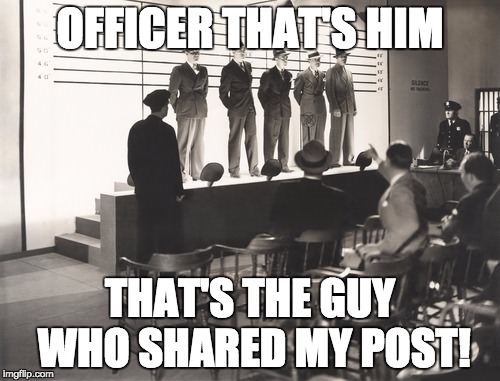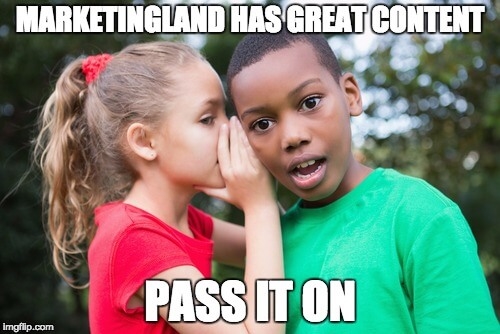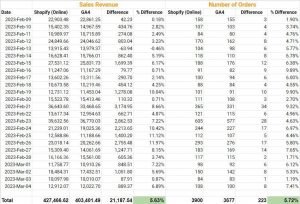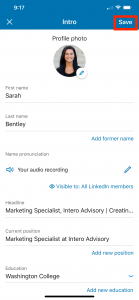How do you get your content shared and then reshared? Columnist Mark Traphagen discusses how to cultivate an audience that will help your content spread like wildfire.

If you invest time in creating high-quality content, you want it to get shared far and wide. Few things are more rewarding than seeing your work catch fire across the web. If you’re blogging for business purposes, getting your content spread can play a major role in growing your business.
So what do you think plays the biggest role in determining whether strangers to your brand will reshare your content? As the clickbaiters say, “The answer will shock you!”
The likely suspects

If I asked you to guess the answer to my question posed above, I’d bet that you would respond with one or more of the following:
- Quality of the content: Certainly, quality has to be in the mix. In the era of “Content Shock,” readers know they have lots of content to choose from and only so much they can actually read and then put into their sharing feeds. In addition, whether consciously or unconsciously, sharers are aware that what they share with their friends reflects on their own reputations, so they are less likely to share junk.
- Type of content: Research released by BuzzSumo reveals that certain types of content (such as research studies, “how to’s” and case studies) tend to get more widely shared in the B2B space.
- Brand and/or author reputation: It seems logical that people will be more willing to share content that comes from a brand or author they already like or trust. As I said above, sharers are aware that what they share reflects back on them, and they want to be associated with brands and people who are cool, well-thought-of and popular.
While all of those almost certainly play a role in prequalifying your content for mass sharing, it turns out there is a hidden factor that almost no one takes into consideration.
Trust starts with your audience

According to research conducted by the American Press Institute, “when Americans encounter news on social media, how much they trust the content is determined less by who creates the news than by who shares it.” Put more simply: People evaluate whether to re-share something based more on who shared it with them than on where the content came from.
The experiment looked at how likely and under what circumstances people were willing to reshare a piece of content. When the content came from a known and trusted friend, test subjects were much more likely to share it with their friends, regardless of whether they knew or trusted the original source. The experimenters compared this to a control group who saw content from known and trusted sources, but not necessarily shared by their friends. This group was much less likely to re-share.
Not only did the first group share more frequently, but they were also much more likely to follow the original source and to sign up for updates from that source.
The value of your audience

That finding carries a staggering implication: When it comes to spreading your content, your own audience is either your greatest asset or your biggest barrier.
Typically in social media, we promote our content first and most vigorously to people who are already our fans. For organic posting, they are the people most likely to see it anyway.
But according to Scott Stratten, president of UnMarketing, your real job is getting through to the second and third circles of your fans. The first circle is the group mentioned previously, those who already follow you. The second circle is their followers, and the third the people who follow the secondary followers.
The American Press Institute study tells us that whether we break through to that second circle (let alone the third circle) is very dependent on who is in our first circle.
Given this new research, you should be asking yourself these questions:
- How good is my audience?
- How likely are they to be people with good, relevant audiences themselves?
- How likely are they to be trusted sources to their followers?
It does no good to have tens of thousands of followers if they don’t hold up after you ask those questions.
Evaluating your audience
Just how good is your social media audience? Evaluate your following on each network by these criteria:
- Relevance: How well are your followers aligned with your brand and its central themes? Are many of them in related industries, or active in interests or activities that typify your customers?
- Influence: Are at least some of your followers considered influencers in topics relevant to your business?
- Reach: How often and how much are your followers’ posts reshared by their followers?
- Engagement: How much does your follower base engage with your posts? For key followers you identify via the first three metrics, how often are they engaged by their followers?
These criteria should give you some idea of the true value of your audience. The higher your following scores in more of those categories, the more likely it is they are conduits rather than roadblocks to your content.
Building a valuable audience
So what if you are just starting out in promoting your content via social media? Or perhaps the evaluation outlined above has made you realize your audience isn’t as valuable as you’d like. What can you do to build a following on social media that is more likely to help spread your content to the right people?
Here are some steps to start with:
- Follow only legitimate, relevant accounts. The first step is to clean up your own follow habits. What I’ve shared with you in this article is why buying followers or engaging in follower hacking schemes have so little value. Since your first goal is to build an audience out of the people you follow and engage with, make sure they are real and valuable.
- Craft your content and shares for your audience. Don’t waste the precious time and limited attention of your first-circle followers. Make sure they come to rely on you for only high-level content and interesting, sharable social posts. Strive to be the kind of account that people want to add to their “can’t miss” lists.
- Regularly engage with your first circle. “Engaging with your fans” has been repeated so often in social media tips that it’s become a cliché. I hope, though, that this article has helped blow the dust off it for you. Your followers are more likely to share your content if they feel some personal connection with you.
- Feed your inner circle. Obviously, no matter how well you work on the quality of your following, not everyone is going to carry the kind of trust and influence with their friends that gets their shares of your content reshared. Learn to identify those who seem to have that magic power to push through to your second circles, and cultivate your relationship with them by resharing their content and engaging with their posts.
If you want to be successful in organic social media, the quality and relevance of your followers are critical. Invest at least as much time in cultivating your audience as you do in creating your content and social media posts.
Some opinions expressed in this article may be those of a guest author and not necessarily Marketing Land. Staff authors are listed here.
Marketing Land – Internet Marketing News, Strategies & Tips
(46)
Report Post









